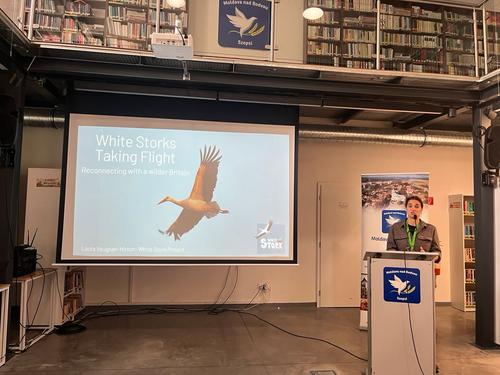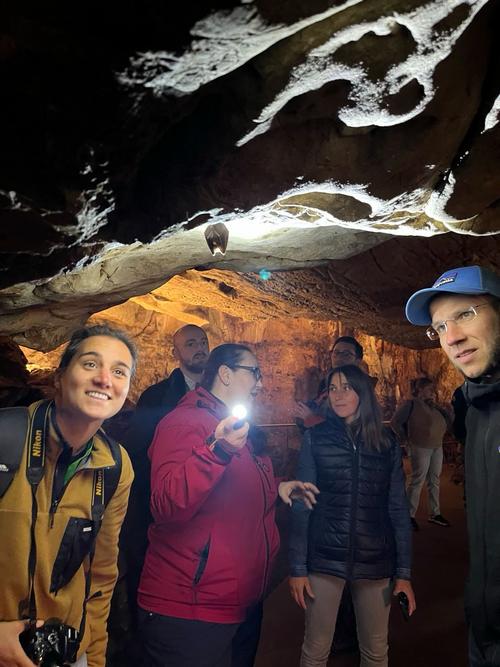The annual meeting of European stork villages took place for the first time in the Slovakian stork village of Buzica from 25 to 28 May. Around 30 participants from seven villages discussed the latest developments, challenges and successes in European stork conservation.

Presentations from the stork villages provided information on the latest developments in European stork conservation.
© Justine Vansynghel
Out into the field: The participants of the meeting gained an impression of the wet meadows around Buzica, the White storks' habitat.
© Justine Vansynghel
No storks, but bats: one of the excursions also took the stork conservationists underground.
© Justine VansynghelDuring the meeting, presentations and discussions focussed on the dangers to which white storks are exposed on their migration route. These include threats from electricity infrastructure, illegal hunting and environmental pollution, particularly from plastic, which many storks mistakenly regard as food. These factors jeopardise populations and concerted efforts are needed to significantly reduce these threats.
Despite the challenges, there were also positive developments to report. The participants exchanged views on successful forms of environmental education and visited various project sites around Buzica where habitat enhancement for storks has been successfully implemented. Of particular interest were the fish ponds near Buzica, where other bird species such as marsh harriers and even the rare imperial eagle could be observed alongside the storks - proof that stork protection measures also benefit a number of other species. Traditional music and dance performances as well as an art competition for pupils also showed how deeply rooted the stork is in regional culture.
After almost ten years, a new European Stork Village was designated a few weeks ago: Knepp Estate & Storrington in the United Kingdom. Representatives from Storrington immediately took part in the meeting in Slovakia and reported on their experiences with the successful reintroduction of white storks in the UK. The newly designated Stork Village brings new momentum to the European Stork Village initiative.


